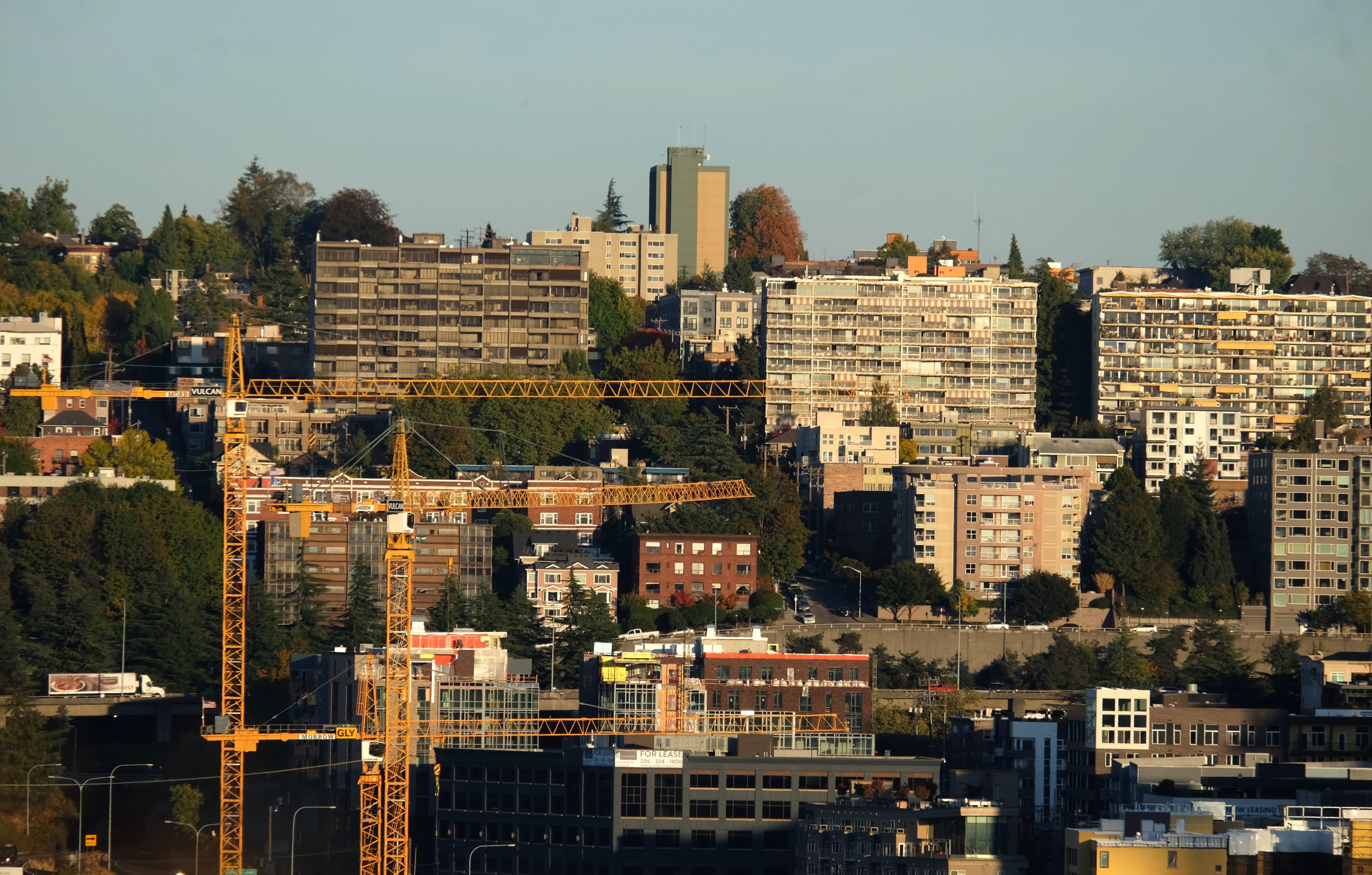In previous Seattle eras, said Scholes, “rich, poor, and in-between” contributed to downtown. And while the expansion of the region’s light rail “will allow more people to have access to the jobs and opportunity” downtown, said Scholes, Seattle needs even more homes to address affordability problems—or, as he puts it, “lift the limits on housing supply.”
Scholes voiced support for the city’s Mandatory Housing Affordability (MHA) plan, which trades extra building height for either physical affordable housing units or payment into an affordable housing fund. The plan is currently undergoing a public comment period while under a hearing examiner appeal.
At a media availability after the presentation, Scholes acknowledged that MHA isn’t the only way to work toward housing affordability. “But if we’re going to spend $7 billion on one of the most expensive rail systems in the country… we will not realize the return on that investment if we’re not building housing around it. We need to do that, and we need to get ahead of it and not chase it.”
Scholes argued the Link light rail corridor, which currently stretches from the University of Washington down through the Rainier Valley to just south of Seatac Airport, should have been rezoned before transit went in. “Now we’re trying to catch up.”
Brookings Institution centennial scholar and former Housing and Urban Development chief of staff Bruce Katz, appearing at the event with Scholes, agreed. “You did lose a bit of time here,” he said.
Much of the corridor that the light rail line serves runs through an area acknowledged by the city as having a high risk of displacement. Still, said Katz, “going up on height is critical, you have to go up on height… think you can do this in a very smart and sensitive way.” He said other regions have used “policy techniques” successfully to address displacement, but didn’t provide specifics.
Aside from MHA, Scholes said he’d like to see “a property tax rebate to existing landlords of existing properties if in exchange they keep some of those units restricted to a certain income” to “take some of the older supply that’s not at that market rent” and “bridge some of that gap.”
He said this would be a “great opportunity to set aside thousands of [affordable] units,” but would need action in the state legislature to come to fruition.
Katz said that said that to address many of Seattle’s problems, we “need private capital to come in and fill what are growing gaps, because the federal government and states are backing away.” He other cities are leveraging private capital toward large-scale neighborhood regeneration, giving Cincinnati as a notable example.
“You have the wealth. You have enough crises to get you motivated,” explained Katz. “But the cultural of collaboration that is backed by capital doesn’t quite exist here in the same way it exists in other parts of the United States. I do think it would be really important just to choose one thing and say, okay, we’re going to bring together leaders and institutions from multiple sectors, put real money on the table, then play it out for two years.”
When asked about Seattle’s plethora of public-private task forces, Katz said that “most of those task forces have no force… in the end a lot of people come together and they put together policy ideas and then those ideas never get executed or implemented. [Other groups are] meeting to decide—they’re not meeting to discuss.”
“You are much wealthier than these places,” said Katz. “It’s a cultural difference.”
Katz said Seattle has to get out of its “consensus-driven” comfort zone—which, to be fair, is somewhat codified for certain projects and policies through the Washington State Environmental Policy Act, which leaves governmental action open to environmental appeals. It’s the process that brought both the current MHA appeal and a delay to the city’s plan to allow more accessory dwelling units.
Still, said Katz, the Northwest is in a “quiet crisis”: “The question is whether cities can remain complacent about it.”
